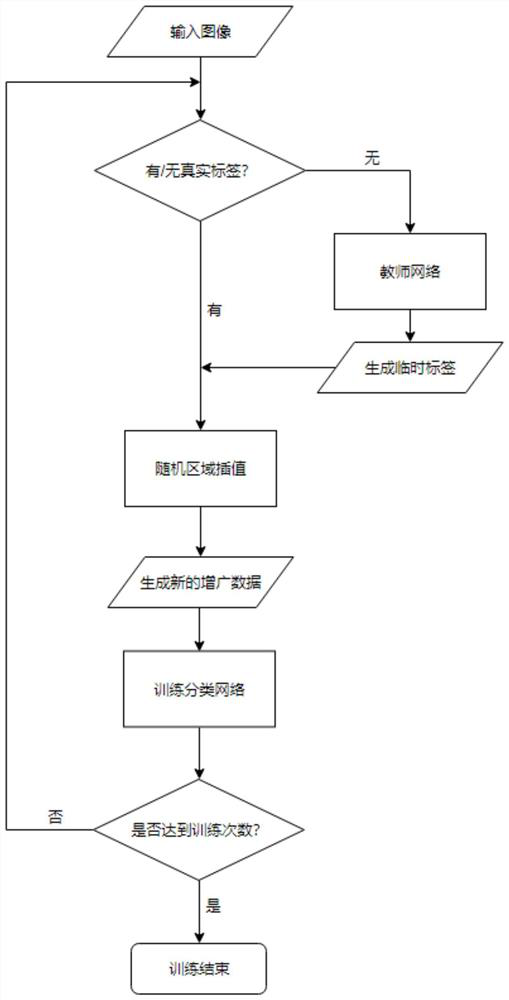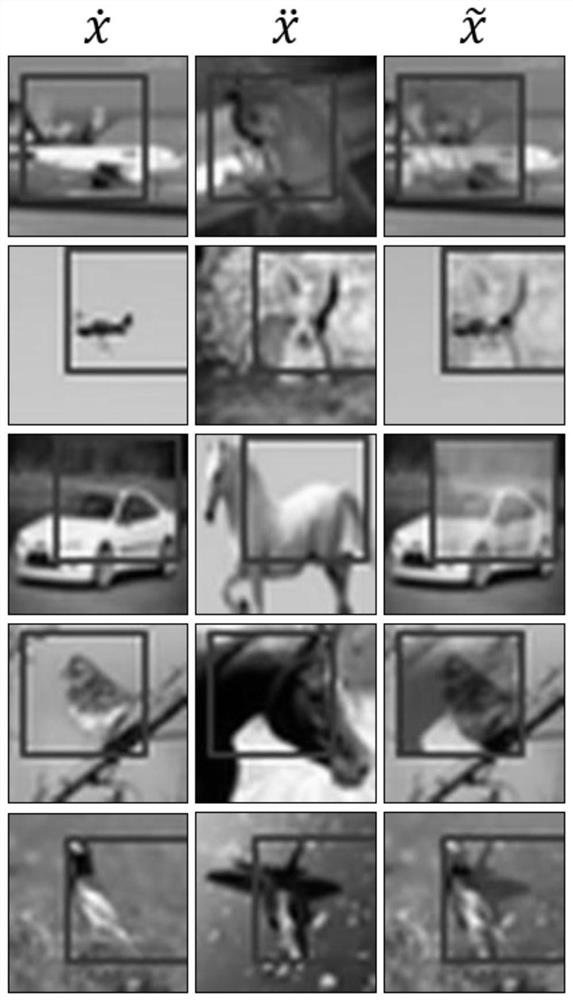Semi-supervised image classification method based on random region interpolation
A classification method, a semi-supervised technique, applied in the field of computer vision, which can solve problems such as areas that are not necessarily important or unnecessary
- Summary
- Abstract
- Description
- Claims
- Application Information
AI Technical Summary
Problems solved by technology
Method used
Image
Examples
Embodiment Construction
[0042] The present invention will be further described below in conjunction with specific examples.
[0043] Such as figure 1 As shown, the semi-supervised image classification method based on random area interpolation provided in this embodiment includes the following steps:
[0044] S1. Divide the training data into a set of real label images No ground truth label image collection and the test data set details as follows:
[0045] First, flip the image horizontally with a probability of 0.5, then fill the width and height of the image with 2 pixels, then randomly crop the image into 32x32 pixels, then subtract the average value of the image pixels, and finally go through whitening processing; as needed To classify the image data, first divide the image data into training data and test data sets Two categories; then the training data is divided into two categories: the real label image set and the set of untrue labeled images The ratio of 1:50, that is, the train...
PUM
 Login to View More
Login to View More Abstract
Description
Claims
Application Information
 Login to View More
Login to View More - R&D
- Intellectual Property
- Life Sciences
- Materials
- Tech Scout
- Unparalleled Data Quality
- Higher Quality Content
- 60% Fewer Hallucinations
Browse by: Latest US Patents, China's latest patents, Technical Efficacy Thesaurus, Application Domain, Technology Topic, Popular Technical Reports.
© 2025 PatSnap. All rights reserved.Legal|Privacy policy|Modern Slavery Act Transparency Statement|Sitemap|About US| Contact US: help@patsnap.com



